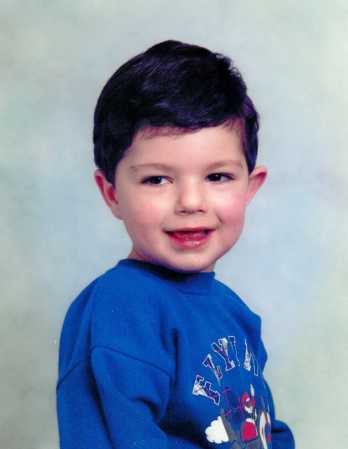Note This is from personal observation and doesn’t represent all people on the autism spectrum and facial anomalies affect a percentage of people with autism these are from personal, parental observations as well as a contribution by Dr. Emily Casanova and would need to see a dysmorphologist but just from general observations certainly my eyes, philtrum, nasal bridge have particularities.
Looking back at some of the pictures in my youth and reading the studies it is interesting to draw conclusions of these variants in facial structure


. Here is some text from the article in a study on the subject in 2012.
The study found children with autism had wider eyes, and a “broader upper face
,” compared with typically developing children. According to the study, children with autism also had a shorter middle region of the face – including the nose and cheeks – as well as a wider mouth and philtrum, the divot above the lip and below the nose.
The study also found that children with more severe autism traits such as behavioral problems, language difficulties, and repetitive behaviors had distinct facial differences from other children with milder autism.

Broader Upper Facial Region (Forehead & Shallow Nasal Bridge) 1

Broader Upper Facial Region (Forehead) 2

Wider Upper Face (Wider Set Eyes)
Looking at some pictures in my early years I do have a wider mouth, wider set eyes and also a broader upper facial region (notice in this picture right eye is slightly misaligned and the left is looking straight ahead). This photo was taken in 1996.

Shorter Mid-Face Region 1 (Nose, Cheeks & Philtrum)
I also have a shorter middle region of the face that includes the cheeks and nose region as well as the neurological effects of mild brain injury and visual perceptual disorders (notice the left eye is misaligned and inverting outwards while my right eye is looking straight ahead). This photo was taken in 1990.

Shorter Mid-Face Region 2 (Nose, Checks & Philtrum)
My philtrum I would say is somewhat wider (but not overtly noticeable) and shallow you can see a shorter mid face region (nose and cheeks) giving my face a “squashed” appearance. (notice eyebrow misalignment) This photo was taken in 1990.

As my face has grown some of the characteristics are still “there” just not as noticeable and would certainly consider them minor anomalies in that context. I do notice in this picture a shorter mid-face region between eyes and upper lip, wide mouth and philtrum to some degree, residual effect of mild brain injury with asymmetrical smile. This photo was taken as an adult in the 2010s.




Premature Birth & Left-Handedness
In the book the “Left-Hander Syndrome” by Stanley Coren he concludes that potential birth difficulties such as trauma, foetal distress, c-section section (to name but a few) can contribute to people being left handed also rare physical characteristics such my case two ears noticeably different heights on the head. This conclusion in my case is clear that a part of my “autism fruit salad” and that the complications of brain injury and handedness (such as language aphasia, simultagnosia, semantic agnosia etc) has had an overall impact on my development as well as psychological mood, anxiety disorders as well as depression.
“The findings of that paper only seem to apply to a minority. I wouldn’t necessarily say you fit the results. However, just at a cursory glance, your childhood pictures do seem to be mildly dysmorphic. Shallow bridge to the nose, epicanthal folds (which are due to underdevelopment of the bridge of the nose), mildly downslanted palpebral fissures, possibly a shallow philtrum but hard to tell just from photos. You would have needed to have measurements done. The spacing of the eyes would need to be measured, because the appearance of the bridge of the nose can give the illusion of different spacing of the eyes. Have you ever been genetically tested? It’s not a bad idea.”
Observations of pictures by Dr. Emily Cananova which has been noted by my parents I certainly have larger “doe eyes”, a wider mouth, smoother philtrum – still a human though! 😉
Other Blog Pages On The Subject
Autistic Facial Characteristics Identified
FASD, Autism and neurological challenges
Paul Isaacs 2016

Pingback: Minor Facial Anomalies in Autism — Paul Isaacs‘ Blog | yowriterblog
June 25, 2016 at 1:40 am
This is something that I have wondered about, myself. My oldest child has some, maybe all, of the traits you list here. It is hard for me to tell, because I am of course very accustomed to him. Yet he is markedly different from his siblings in his facial features- and in the ways you mention.
LikeLiked by 1 person
June 25, 2016 at 7:05 pm
Yes certainly for some people on the spectrum there may well be minor anomalies in appearance that at first glance may not be for obvious – Emily Casanova is writing a paper on the subject so I am sure she will have some more info on the subject. 🙂 Kindest regards Paul
LikeLiked by 1 person
June 4, 2017 at 9:11 pm
My son as well Paul has the shallow philtrum
LikeLiked by 1 person
Pingback: Minor Facial Anomalies (Dysmorphisms) in Some People With Autism – Art by Nicole Corrado
September 26, 2023 at 10:12 pm
Btw, you do not have epicanthal folds. Epicanthal folds means the “channel” between the surface of your upper lid and the side of your nose would be closed off. Yours is open.
LikeLike
September 27, 2023 at 5:05 pm
Thank you for your comment, the nuance in the post is from observational perspectives from Dr. Emily Casanova and various photos of myself .
Again thank you for sharing your information and perspectives.
LikeLike